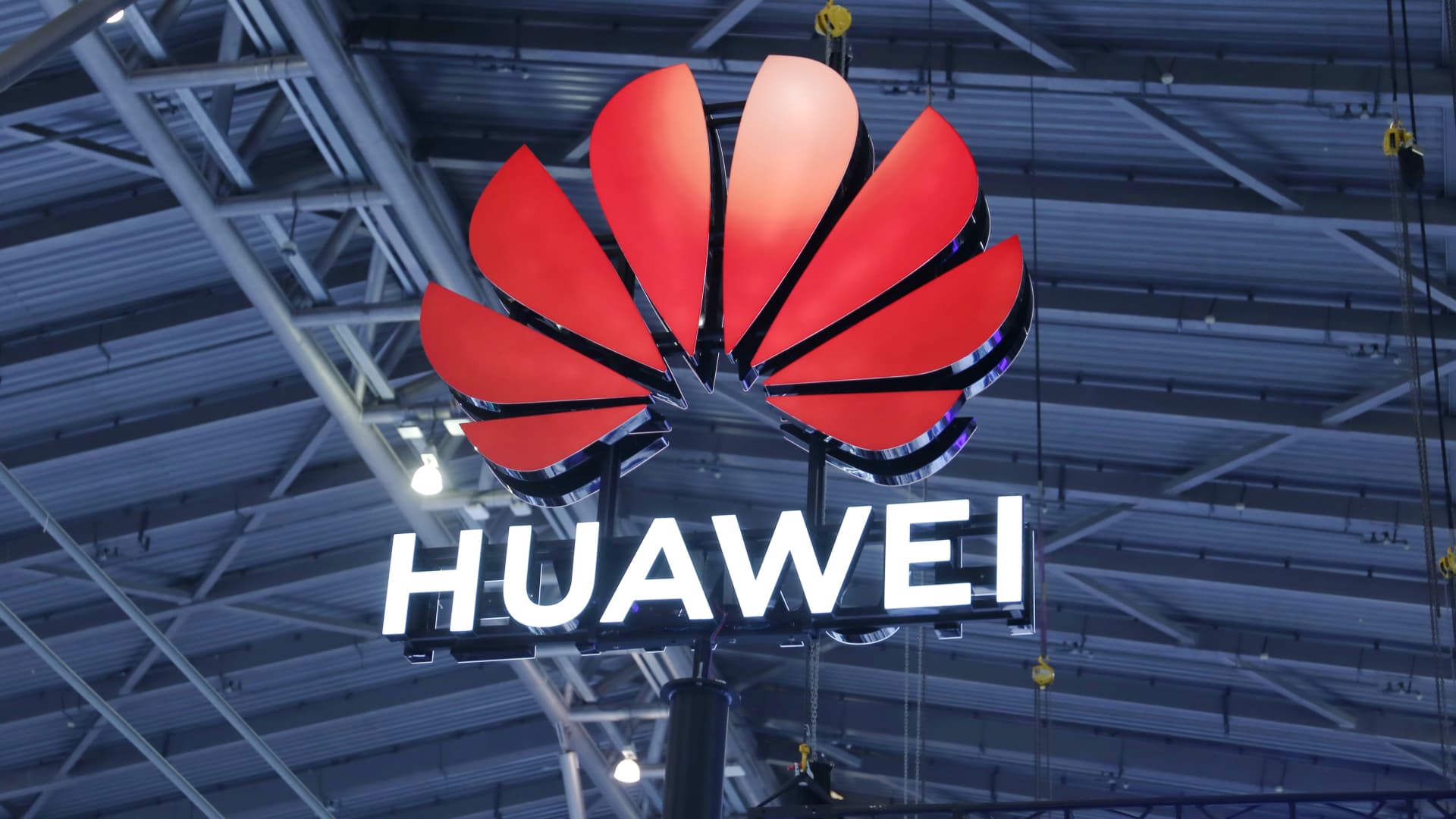Huawei is a technology firm that manufactures and sells telecommunications equipment, consumer electronics, smart devices.
CFOTO | Future Publishing | Getty Images
Huawei on Friday announced the latest version of its mobile operating system HarmonyOS 4 and an enhanced A.I assistant, as the embattled giant ramps up efforts to re-establish strength for its smartphone business.
The Shenzhen-based telecoms firm is trying to recovery from U.S. sanctions dating back to 2019, which cut it off from key technologies such as semiconductors, like 5G chips and software. The move crippled its smartphone business globally, demoting it from once being the number one player.
American restrictions cut Huawei off from Google’s Android mobile operating system, which destroyed Huawei’s smartphone business outside of China.
In 2019, Huawei launched its own operating system called HarmonyOS, in a bid to replace Android. The company has been developing new versions of the system ever since, with an eye to regain some market share in smartphones.
The Friday launch of HarmonyOS 4 highlights the company’s ambition to regain strength for its smartphone business.
“Huawei’s flagship smartphones are making a comeback,” said Yu Chengdong, CEO of Huawei’s consumer business and intelligent automotive solution business groups, during the Huawei Developer Conference 2023 on Friday.
Since 2019, Huawei has focused on trying to regain market share in China, finding some success. Huawei’s market share jumped to 13% in China in the second quarter of the year, up from 7.3% during the same period of 2022. The company’s smartphone shipments grew by 76% year-on-year.
High-end focus aims to challenge Apple
Huawei’s strategy has become more refined, as it looks to compete in the premium segment of the smartphone market, rather than across all sectors.
“Huawei’s smartphones took the second spot in the high-end segment. So we are making a comeback with vengeance,” said Yu.
In the segment of phones priced more than $600 in China, Huawei’s share jumped to 18.4% in the second quarter versus 6.7% in the same period in 2022, according to IDC.
Huawei’s high-end focus makes sense, as Chinese consumers are on average willing to pay more for smartphones. The company released its Mate X3 foldable this year, and that device, along with the flagship P60, helped the company boost its premium segment share.
Despite being cut off from critical foreign chips, Huawei plans to re-enter the 5G smartphone market by the end of this year, according to Reuters. The news agency reported that Huawei should be able to procure 5G chips domestically.
5G refers to next-generation mobile internet technology. Most high-end phones are able to connect to 5G networks, which promise super-fast internet speeds. Huawei’s flagship devices have been missing this feature because of U.S. sanctions.
“It totally makes sense for Huawei to focus on the premium segment. It’s not only that the high-end segment was more resilient in the gloomy Chinese market, but Huawei could also leverage its premium brand name in China, which other Chinese vendors were still striving for,” Will Wong, research analyst at IDC, told CNBC.
“Furthermore, premium products could potentially generate more favorable revenue and profitability.”
Software push
Part of Huawei’s high-end strategy revolves around HarmonyOS, an operating system it says is designed for smartphones and other devices like wearables and TVs. The company aims to create unified software across multiple consumer electronics categories, much like Apple.
The Chinese tech giant said that it will bring “a HarmonyOS with even more intelligent and personalized experience.” HarmonyOS currently runs on more than 700 million devices, including smartphones, watches and tablets, the company said.
Huawei said that the new version of Huawei’s AI voice assistant Celia, which provides assistant features on smart devices, has been trained with Huawei’s Pangu AI model to improve productivity in life and at work. In July, Huawei launched Pangu 3.0, as it seeks to capitalize on the AI boom and ChatGPT frenzy.
At least 200 million mobile phone users interact with Celia every month, said Huawei.
“You can interact with Celia by not just voice but also texts, pictures, documents and so on. You can also type to interact with Celia if it’s not the right time to talk. Dialogues between users and Celia can be more natural and intuitive,” said Jia Yongli, director of consumer business at Huawei.
Celia can also perform a range of tasks, such as writing summaries, translation, writing emails and official documents, said Jia.
Huawei also said that a new set of features will be available to invited users in late August.
Huawei struggles overseas set to continue
Still, Huawei’s smartphone rejuvenation is likely to be confined to China, which accounted for 89% of its handset shipments in the second quarter, according to IDC.
That’s because Huawei’s phones still lack 5G and HarmonyOS doesn’t have the key apps, such as Google, people outside of China are used to using.
“It’s not an easy task to regain ground overseas,” Wong said, suggesting many users have switched to other phone brands due to Huawei’s lack of key features.
“It would take time for Huawei to get the users switched back even if it could address the key pain points of its products in the overseas market now.”

